
Amid the pandemic, the U.S. is pushing to seize land and build the border wall. Nayda Alvarez says surveyors have hopped fences and planted stakes on her property.
- Share via
LA ROSITA, Texas — Nayda Alvarez said she has caught border wall surveyors — without masks or other protective gear — sneaking onto her property along the Rio Grande several times this year, most recently in April.
Later that month, federal attorneys summoned her to court in an effort to seize for the border wall land that her family has owned and inhabited in La Rosita, Texas, since the 1800s. If she wanted to keep the land, Alvarez and her 76-year-old father would have to attend a hearing in a neighboring county hit hard by COVID-19. Her attorney requested that the hearing be conducted by phone, as others have been at federal courts during the pandemic, but the judge instead postponed the hearing to August. Alvarez is still afraid to go.
“How can I defend myself when I can’t even be there?” the high school teacher said as she sat at home, where she’s quarantined this summer with her two daughters and grandchildren. “It’s not the American thing to do.”
Last week, President Trump visited Arizona and reiterated his promise to build 450 miles of new wall along the 1,954-mile U.S.-Mexico border by year’s end. Since the pandemic started, his administration has accelerated wall construction and increased spending from $11.1 billion to $15 billion, awarding more than $1.7 billion in new contracts.
“New border wall system construction has not increased due to COVID-19,” said Matthew Dyman, a spokesman for U.S. Customs and Border Protection. “Any increase in border wall activities is solely due to the progression of the projects and additional funding received.”
Dyman disputed Alvarez’s account. He said that government surveyors mistakenly entered her land without her permission last year, before the pandemic, even though Alvarez has date-stamped photos she snapped of the workers on her land. Dyman said the surveyors entered Alvarez’s property after getting permission from someone else who “represented themselves as holding an interest in the land.” He said that after Alvarez encountered the surveyors and told them to leave, they did.
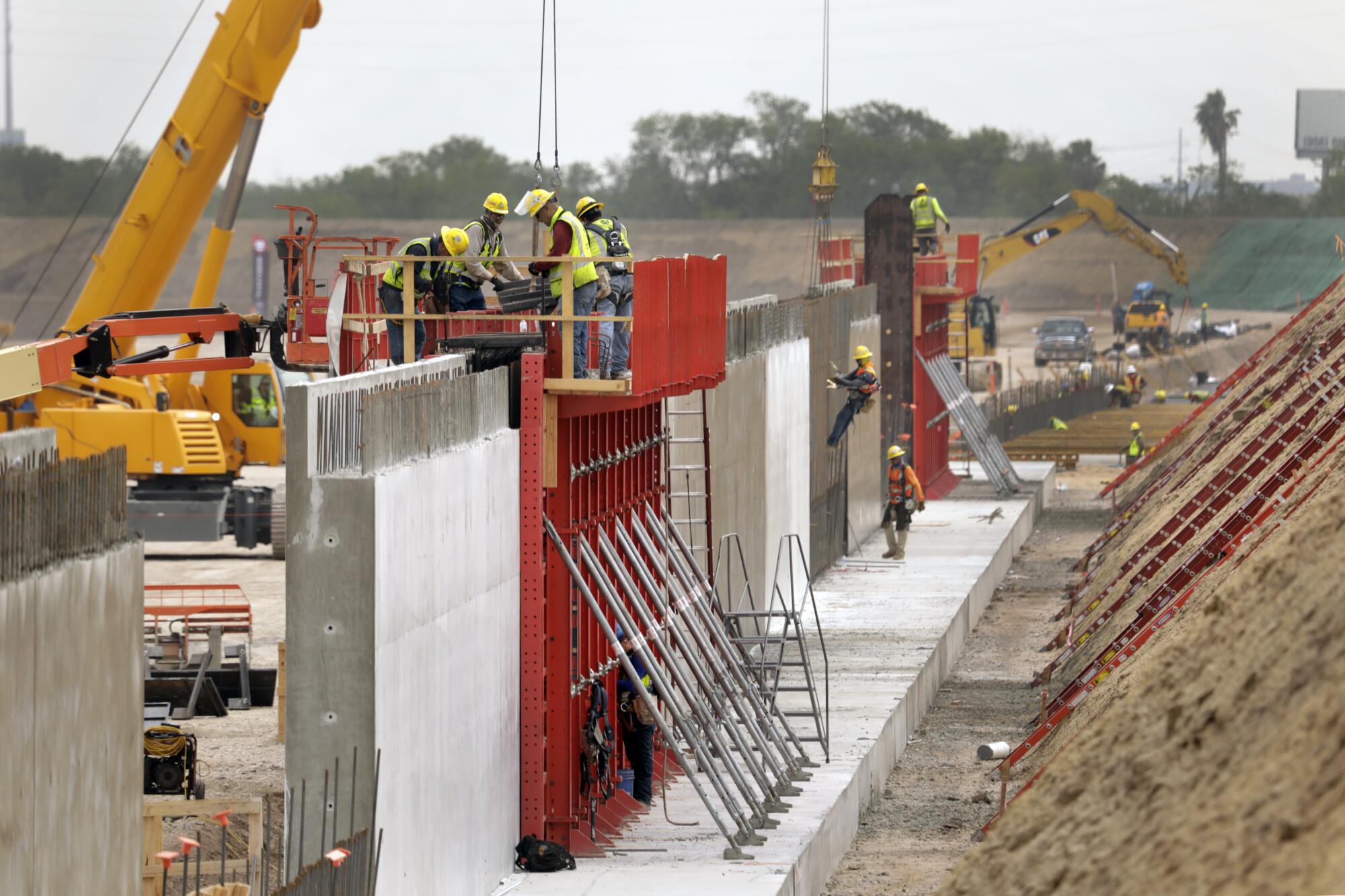
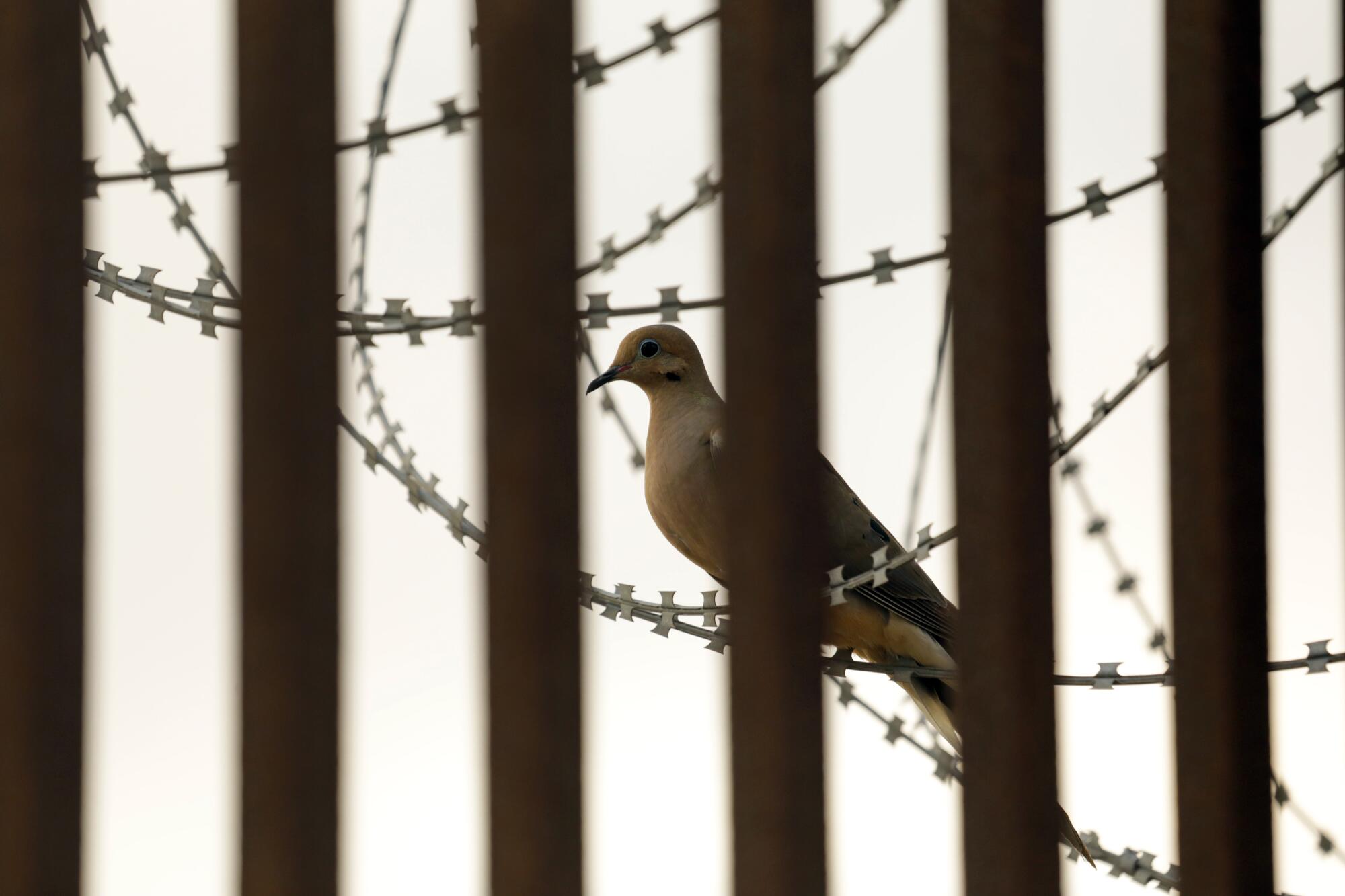
California officials, the Sierra Club and other groups have challenged the Trump administration’s use of military funds to pay for the border wall and scored a victory last week, when the U.S. 9th Circuit Court of Appeals found that the administration illegally tapped $2.5 billion in military funding. But the decision covers only a fraction of wall funding, is likely to be appealed and isn’t expected to slow construction, given that the Supreme Court last year ruled in Trump’s favor in a similar case.
Before the pandemic, only about a mile of new border wall had been built since Trump’s election, and 95 miles had been replaced, according to Border Patrol.
Since the start of the pandemic in mid-January, federal crews have built two miles of new wall, in California and Texas, and replaced 93 miles of border fence nationwide, for a total of 191 miles of new and replacement wall, according to the most recent report from Customs and Border Protection, issued June 26.
The administration also built 31 additional miles of new and replacement secondary wall (which runs parallel to an existing barrier) north of the border, which it counts toward its total of 222 miles. Trump commemorated the 200th mile by visiting and signing a stretch last week in San Luis, Ariz.
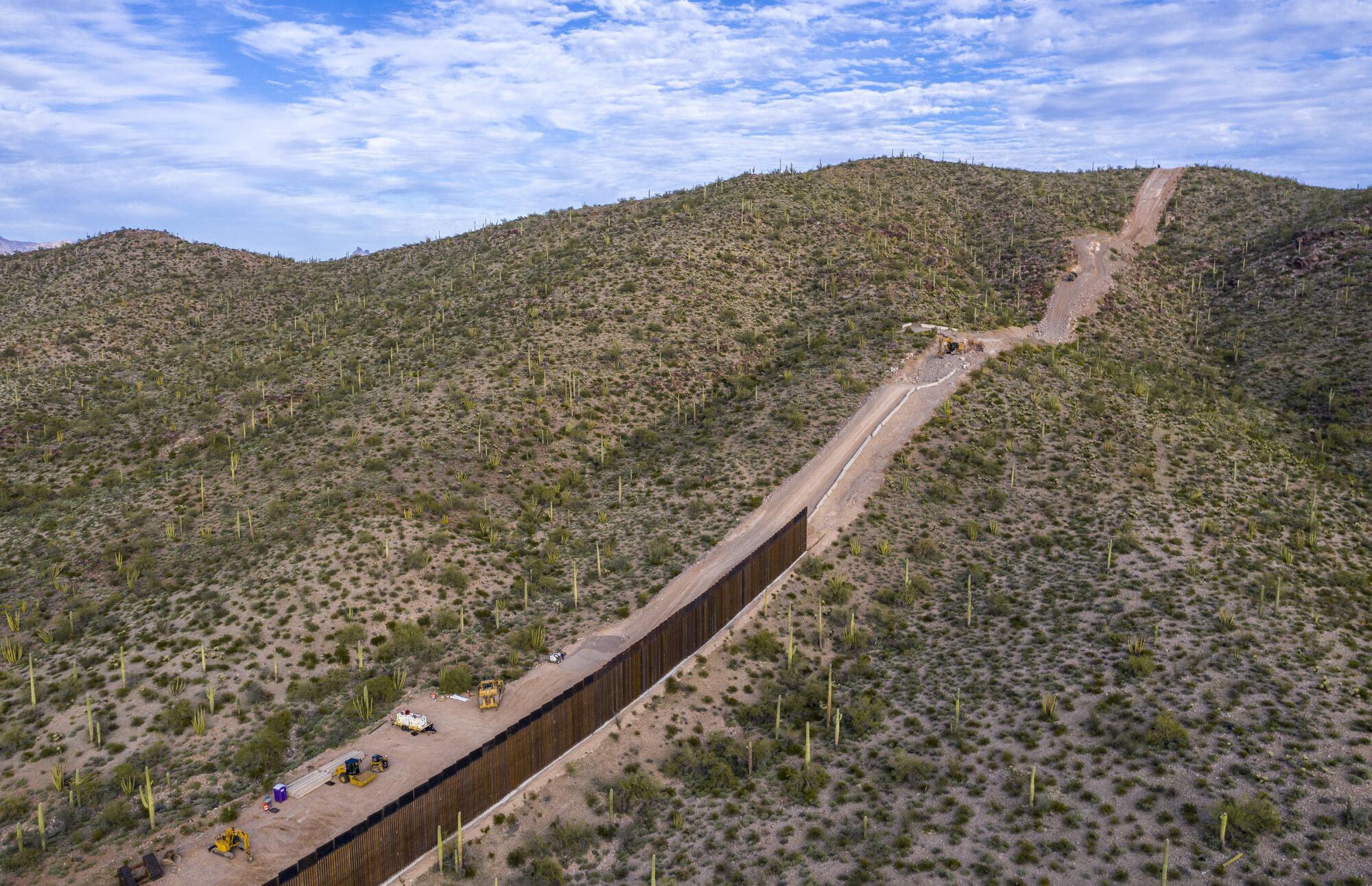
The Trump administration has increased the speed of wall construction since the start of the pandemic by classifying the work as essential, filing twice as many lawsuits to seize land and waiving environmental and contract oversight laws.
The largest wall contract to date, $1.3 billion to build 42 miles of wall in Arizona, was awarded last month to North Dakota-based Fisher Sand & Gravel Co., which is under investigation by the Defense Department for being awarded $400 million to build 31 additional miles of wall in Arizona earlier this year.
Chief Executive Tommy Fisher won that contract after appealing to Trump on television and building a three-mile border wall on private land in the Rio Grande Valley at his own expense, about $42 million. The wall was a showpiece, built on the banks of the Rio Grande just south of a site where the federal government had already contracted with another company to build a 13-mile stretch of new wall for $80 million; construction on that wall started last month.
Dyman, the Border Patrol spokesman, said the new wall was funded two years ago, “planned in advance of the privately funded barrier” based on the agency’s “operational priorities and will be integrated with other segments of the border wall system.”
U.S. Rep. Bennie Thompson (D-Miss.), who chairs the Homeland Security Committee, has questioned the propriety of Fisher’s contracts.
“If the administration cared about anything besides political optics and maximizing miles of fence in the run-up to an election, they wouldn’t have awarded this contract,” Thompson said in a statement. “Given the coronavirus pandemic and the ongoing investigation into Fisher, the administration should pause construction and contracting decisions until the investigation has concluded favorably and it is safe to resume nonessential construction projects.”

Unlike Arizona, where much of the border with Mexico is on public land, Texas has long been a stumbling block for wall construction because most land along its border is privately owned. In order to build the wall, government lawyers have to get landowners’ permission, file lawsuits to seize it or find loopholes.
Since the pandemic started, government lawyers have filed twice as many lawsuits to seize land in the path of the border wall in Texas — 40 in total — covering more than a thousand acres, an area larger than New York’s Central Park. The federal government sued to seize land from individuals but also from a Catholic children’s home in Laredo operated by nuns, Laredo Community College and the city of Laredo. Many have federal court hearings scheduled in coming months.
Laredo Mayor Pete Saenz said city attorneys fought a lawsuit filed by U.S. attorneys to build the wall on more than 980 acres of city land that includes a golf course and water treatment plants. He said city attorneys have questioned whether Congress authorized the Laredo wall construction as a spending priority.
Saenz said federal lawyers wanted to meet with city officials in recent months about the proposed wall, but “we were so overwhelmed initially with the pandemic, we just didn’t have time to allocate for the lawsuit.”
Earlier this month, the city granted the federal government access to the land for a year to survey, without agreeing to construction.
In April, federal lawyers persuaded a judge in south Texas to grant them access to survey a third of a mile in the Rio Grande Valley’s Santa Ana National Wildlife Refuge after the administration promised to exempt the refuge from the border wall following local protests. Lawyers successfully argued that the land was exempt from protection because it’s beneath a government levee.
“The government has moved aggressively against landowners under the cover of this pandemic,” said Ricky Garza, an attorney with the Texas Civil Rights Project, which represents 16 Texas landowners in the path of the wall, including Alvarez.
Garza said his clients were “being forced to choose between their health and defending their homes.” Those who don’t attend court risk having the government seize their land, he said, as it did during the last major border fence building project in 2006 in south Texas.
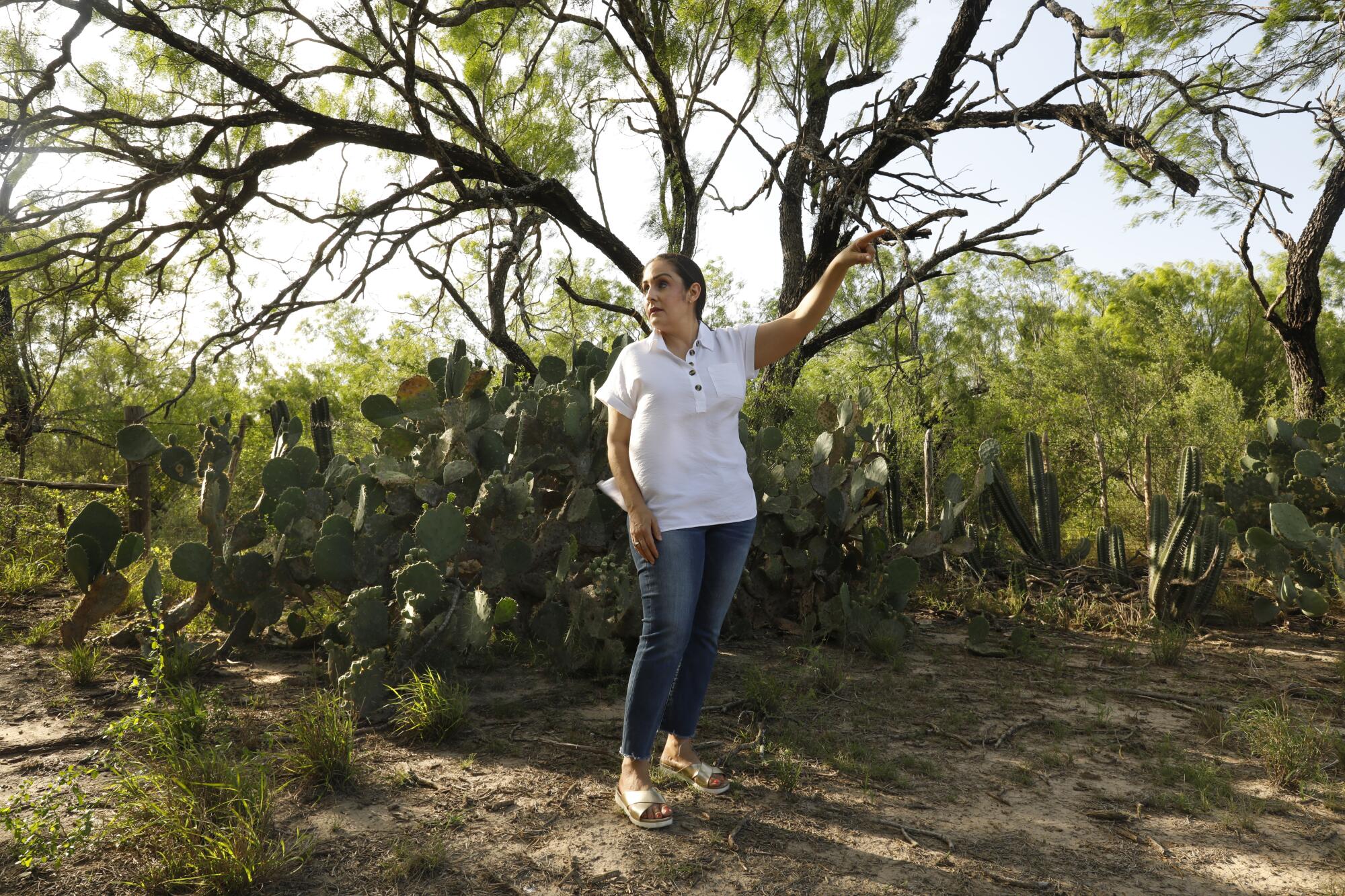
Alvarez said that since the pandemic started, surveyors have hopped fences and planted wooden stakes in her land, which she ripped out.
“I know my rights,” Alvarez said.
She said armed Border Patrol agents visited her this spring and asked her to sign documents allowing surveyors onto her land.
“I said, ‘Do we have to get our guns out, too?’ ” said Alvarez, whose family hunts doves on the land.
Wall building has sped up across the surrounding Rio Grande Valley, with crews at five construction sites at work on 45 miles of border wall last month, an agency spokesman said.
In the small border town of Hidalgo, Texas, scores of men in hard hats and fluorescent vests were at work on a three-mile segment of wall north of the Rio Grande, surrounded by citrus groves and cornfields. They dug trenches, poured concrete and hoisted panels of steel bollard fencing into place with cranes.
Roberto Lopez, outreach coordinator at the Texas Civil Rights Project, said he worried about so many workers flooding the rural area during the pandemic.

Roberto Lopez’s group, the Texas Civil Rights Project, joined others to send a letter to Homeland Security, the Pentagon and the Justice Department demanding they halt wall work in March.
“Our lives as border communities are at risk. This needs to stop,” he said while visiting the site last month.
His group joined more than 100 others in sending a letter to the leaders of Homeland Security, the Pentagon and the Justice Department (whose lawyers filed lawsuits to take the land), demanding they halt wall work in March. The group started an online petition opposing wall construction during the pandemic that garnered more than 2,800 signatures.
Members of Congress have also written to the Trump administration several times since the start of the pandemic, demanding that construction on the border wall be halted. Lawmakers cited environmental and public health risks, particularly in towns like Ajo, population 3,000, in remote western Arizona with few medical resources. Earlier this month, an Ajo clinic confirmed its first two cases of COVID-19 — both workers on the wall.
“Ajo and some of the smaller communities are very, very concerned as construction workers have descended to work on the wall. It is a health risk during this emergency,” Rep. Raul M. Grijalva (D-Ariz.) said, noting that after he wrote to the departments, he received no response.
Dyman insisted Border Patrol has responded to all congressional inquiries and was “closely monitoring the evolving situation, in coordination with the U.S. Army Corps of Engineers … to ensure all guidelines issued by the Centers for Disease Control [and Prevention] are followed while continuing our commitment to secure the border.”
Federal officials halted wall construction during the pandemic for at least one site: a seven-mile stretch of Cocopah tribal land in Yuma, Ariz. Tribal leaders and the Sierra Club had fought the $3.8-billion project, arguing it would block the tribe’s access to the nearby Colorado River. Last month, the federal government abandoned the project, noting that “contractor pricing for certain projects and segments was higher than expected.” Roughly 42 miles of wall is still due to be built in Yuma under the contract.
To speed border wall construction in Arizona, the Trump administration waived environmental laws and tapped ancient aquifers for water to tamp dust and mix concrete. Near Quitobaquito Springs west of Lukeville, wall construction crews could be seen in February pumping and spraying water from the aquifer that feeds the springs — home to endangered Quitobaquito pupfish and Sonoyta mud turtles — into trucks.
“All the water they’re using for this project is coming out of the ground,” said Laiken Jordahl, an environmental advocate with the Tucson-based Center for Biological Diversity, as he watched the truck pump water a few feet from a new stretch of border wall. “This is the single most valuable resource in the desert.”
Dyman said the U.S. Fish and Wildlife Service and the National Park Service were consulted and determined that no groundwater would be used within five miles of Quitobaquito Springs for wall construction. He said the park service was monitoring for any “significant changes in water levels” at the springs, and Border Patrol will “evaluate groundwater use for the Tucson projects and will identify mitigation strategies that minimize impact to the greatest extent possible.”
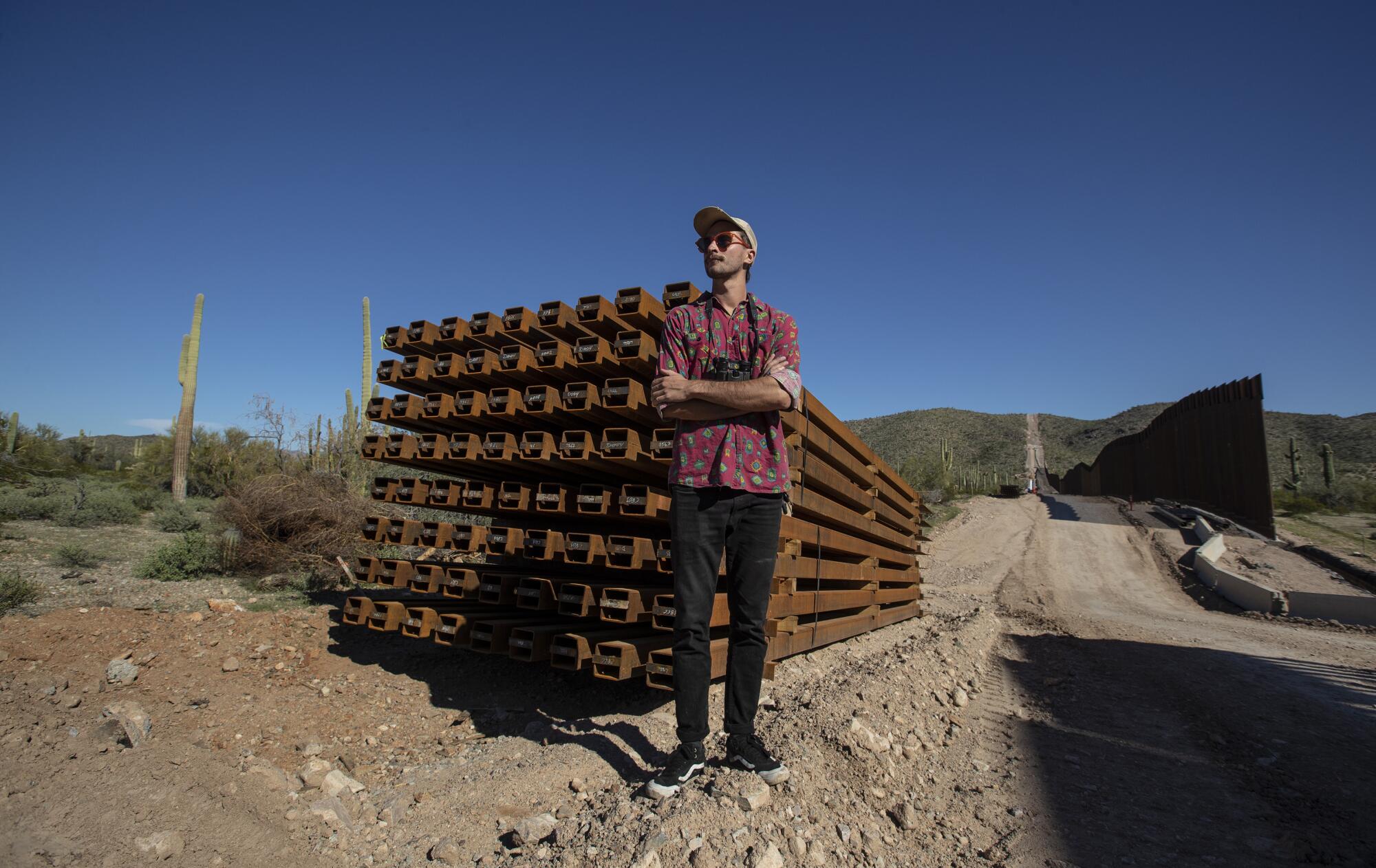
Jordahl has documented how construction crews have chopped down scores of the area’s native saguaro cactuses and other plants as they made way for the wall in surrounding Organ Pipe Cactus National Monument and to the east in Cabeza Prieta National Wildlife Refuge.
In eastern Arizona near Douglas, construction crews have tapped an aquifer in the San Bernardino National Wildlife Refuge to mix concrete for the wall’s foundation, endangering wildlife in the refuge’s ponds, according to Myles Traphagen, a Tucson-based ecologist who coordinates the nonprofit Wildlands Network’s borderlands program.
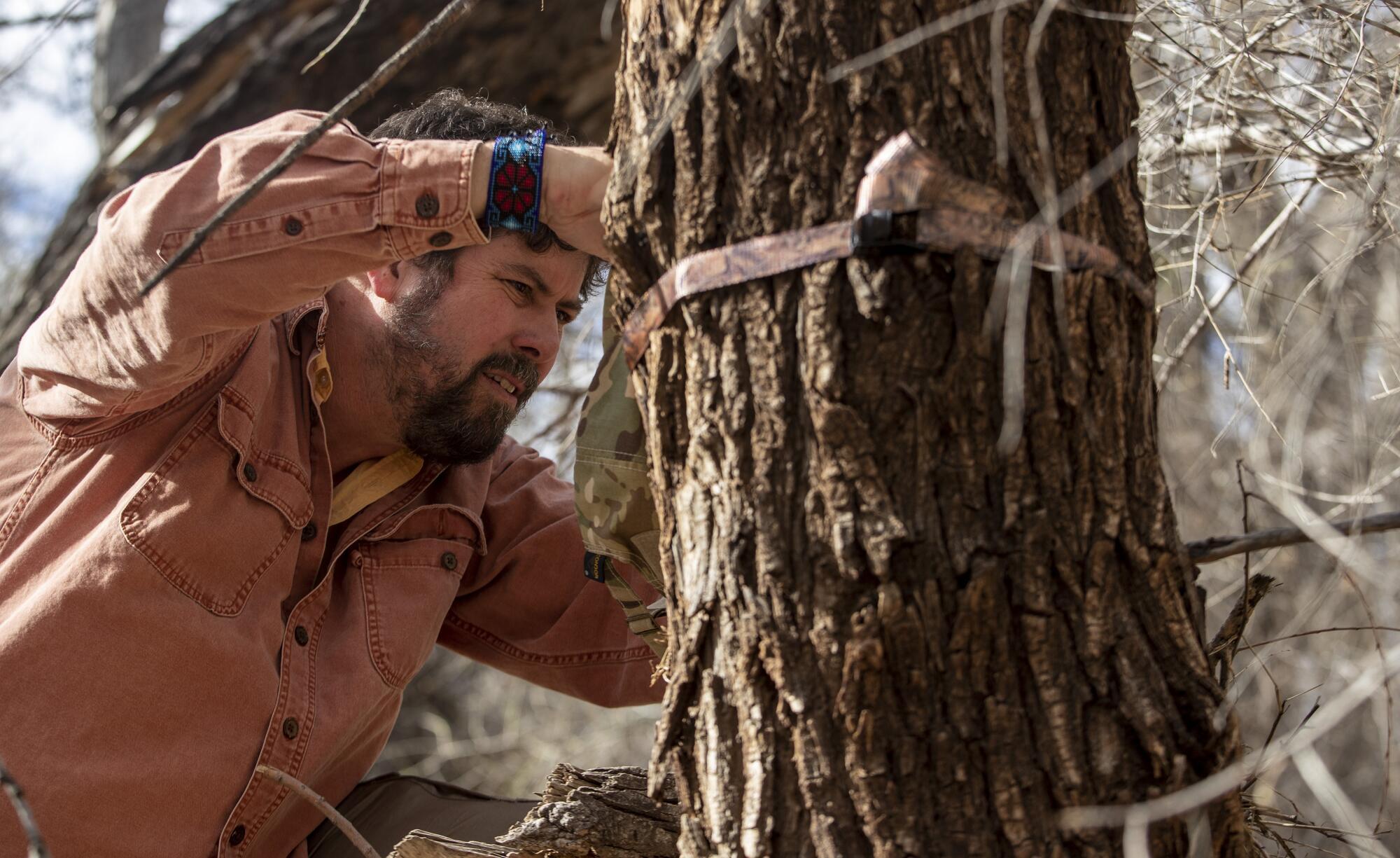
Traphagen has been monitoring pond water levels at the refuge, which have dropped since wall construction began this spring, threatening fish such as native Yaqui chub, shiner and minnow. He set up game cameras to track the wall’s impact on jaguars, ocelots, mountain lions and other animals that routinely cross the border.
Dyman conceded that Border Patrol monitoring in the area showed “data indicating a decrease in the availability of water withdraw from refuge wells.” He said the agency is working with the Fish and Wildlife Service and the Army Corps of Engineers on “a mitigation strategy which includes the possible upgrade of existing water well pumps at the refuge.”
During a trip in February to check two newly installed infrared cameras strapped to cottonwood trees, Traphagen recovered hundreds of photos of animals traversing the area, including a mountain lion. In the distance, construction equipment rumbled as half a dozen workers and supervisors gathered on a bridge where the new 30-foot border wall would soon span the wash.
“It’s coming,” he said.
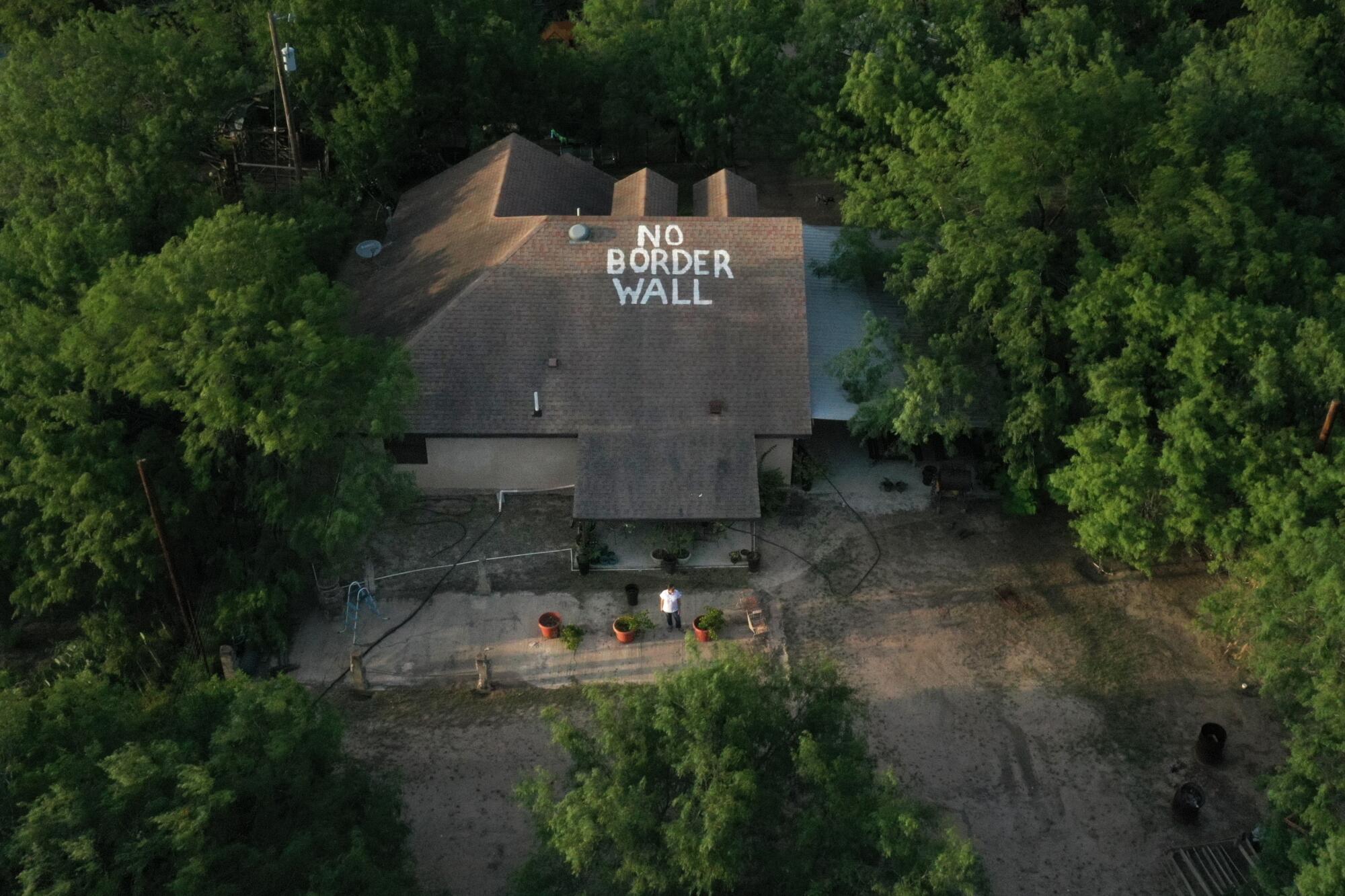
More to Read
Sign up for Essential California
The most important California stories and recommendations in your inbox every morning.
You may occasionally receive promotional content from the Los Angeles Times.











